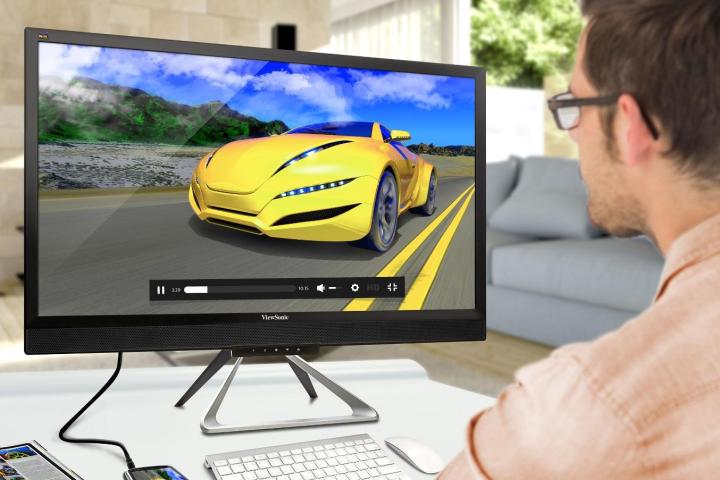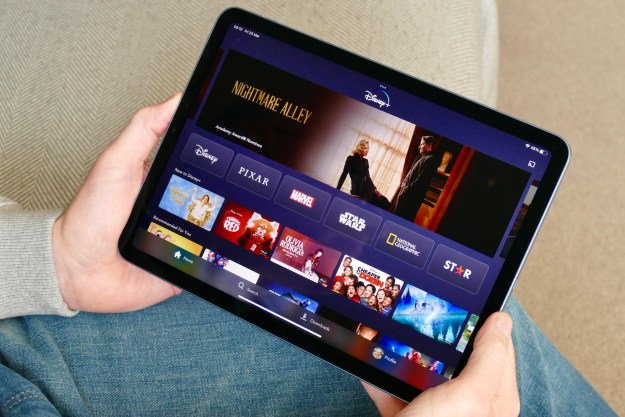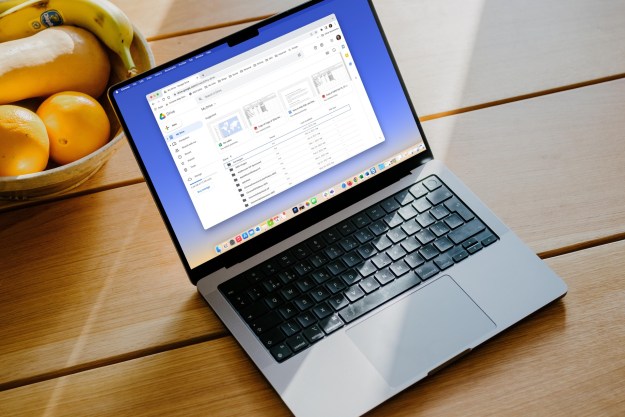
It’s true; Ultra HD isn’t cheap, and it’s certainly more expensive than buying nothing at all. Yet the price is not as high as you might think. If you can afford to buy a new mid-range desktop, a high-end video card, or a new iPad, you can afford 4K for your desktop.
Here’s how.
Upgrading your video
Many users can’t make the move to 4K because of their system’s video output. The latest Intel HD4400/4600 graphics technically support 3,840 x 2,160 at 60Hz, but not all systems with Intel HD 4000 Graphics have the DisplayPort output needed to carry the signal. Other, older desktops can’t support the resolution at all. Intel’s HD 3000 series goes no higher than 2,560 x 1,440, and systems with integrated graphics built before 2010 are often capable of no more than 1080p.
Thankfully, you can grab an upgrade that supports the full resolution at 60Hz without spending a fortune. The best option is probably a Radeon R7 250, which can do 3,840 x 2,160 at 60Hz over DisplayPort. The Radeon HD7770 can do the same, but availability is limited, as it’s an older design that’s going out of stock. Expect to pay around $80 either way.

Nvidia fans must spend a bit more, unfortunately, for a GTX 750 with a DisplayPort connector. These are generally $100.
Both cards are small, quiet and will fit into any PCI 2.0 or PCI 3.0 slot. They also work with a 300-watt (or better) power supply, which is common. In addition to offering DisplayPort, they typically provide HDMI and DVI. You can’t use either connection for 4K at 60Hz, but you can use them to add a second monitor.
Grabbing a budget display
Spending $80 to $100 of the $600 budget doesn’t leave you with a lot to spend on the monitor itself. Certainly the top-tier models are out of the question. But what can you get, really, for about five Benjamins?
You don’t need to spend over a thousand dollars for an impressive picture.
Quite a lot. Samsung’s U28D590D is currently $520 at many retailers, a sale that may or may not last through the holidays. The monitor serves up 3,840 x 2,160 at 60Hz alongside strong image quality.
Other options include the ViewSonic VX2880ml and the Planar IX2850. These lesser-known brands may turn some buyers off, but there’s no reason to fret. In truth the vast majority of monitors have panels sourced from just a few manufacturers like LG and Samsung.
The Planar is particularly attractive, as it’s only $450 and, according to a review from Tom’s Hardware, achieves 96 percent of sRGB. That’s on par with slightly more expensive monitors such as the Acer B286HK and CTL X2800, both of which we’ve reviewed.

Budget 4K monitors are a strong value not only thanks to their pixel count, but also the ever-increasing quality of basic TN panel technology, which used to be chock full of compromises. While gamut is still narrow compared to IPS, many provide solid color accuracy, near-perfect gamma and contrast similar to more expensive models. You don’t need to spend over a thousand dollars for an impressive picture.
What to avoid
Not all budget options are worth your money. Many of the less expensive 4K displays are old models which used two separate display panels side-by-side to form a full
Snagging a deal on large monitor may seem attractive, but trust us; you will not be satisfied with the experience.
Very large displays like the Seiki SE39UY04 are another appealing, but ultimately misguided selection. Some are restricted to 30Hz at 4K, which means motion won’t appear as smooth as with a proper 60Hz set. Such a large panel also negates the resolution’s stunning sharpness. A 40-inch display is really best when viewed from four or five feet away. Sitting at a normal distance of about two feet will make individual pixels easy to identify, even at this extreme resolution.
Snagging a deal on large monitor may seem attractive, but trust us; you will not be satisfied with the experience. The difference between a 30Hz and 60Hz display is immediately notice the moment a window is moved. Spend your money wisely, though, and you’ll be surprised how far it can stretch.
4K doesn’t have to cost a fortune
I’m sure that some readers will still scoff at the thought of upgrading. “Only $600, he says? That’s still a fortune!”
True, it’s nothing to sneeze at, but it’s not substantially more than you might spend upgrading to a 1440p display. And it’s not more than you might spend on a new high-end tablet or smartphone.
The clarity you’ll receive from the switch to 4K is like upgrading to an iPhone 6 from an old feature phone. Sure, it’ll cost you. But isn’t it worth it?
Editors' Recommendations
- 4K gaming monitors are getting cheaper, but I still won’t buy one
- LG’s latest 4K monitor wants to be your smart home hub
- Acer’s TV-sized Predator gaming monitor is OLED, 4K, and living room-ready
- LG’s UltraFine OLED Pro monitor looks like the ultimate 4K display for creatives
- CES 2020: Dell’s new 4K USB-C monitors look absolutely stunning


